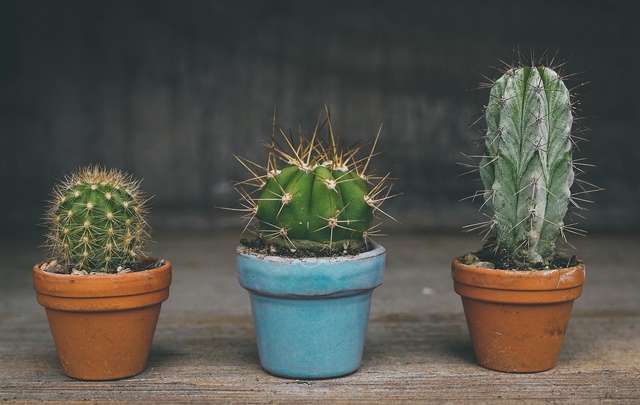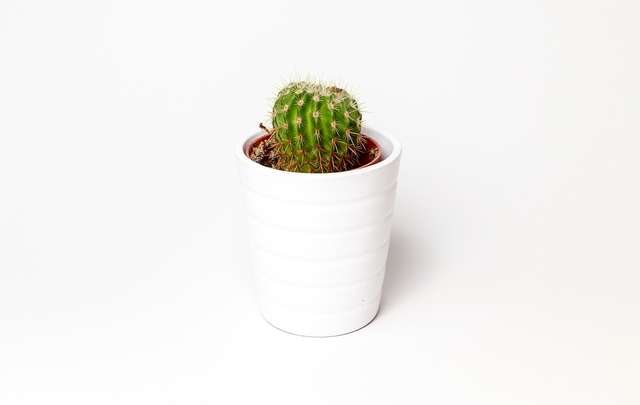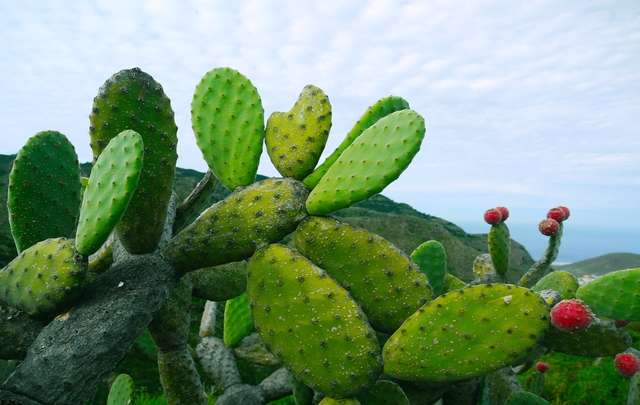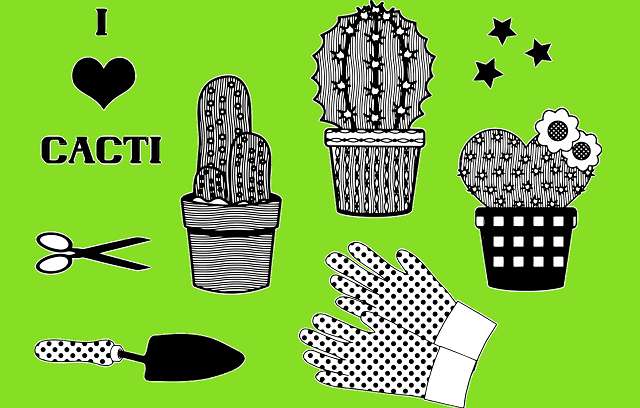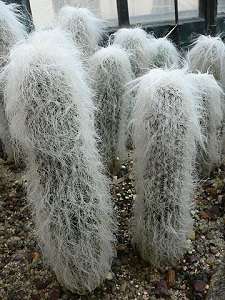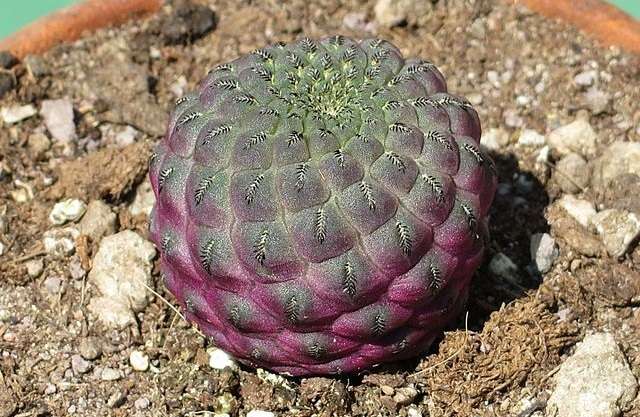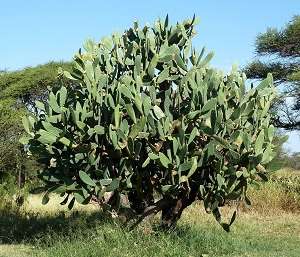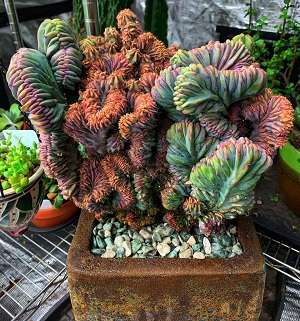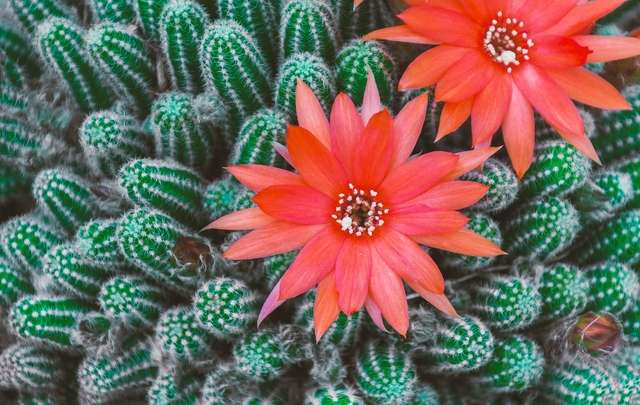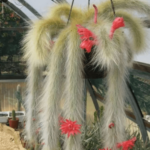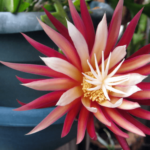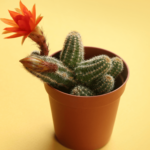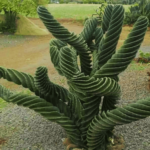The popularity of cactus is on the rise.
Unlike other plants, they adapt well to various environments.
So, if you want to learn how to care for cactus or mini cactus and are in a place:
- Hot
- With low or medium humidity
Know that cultivation will be quite simple, as this is the ideal climate for these plants.
Continue reading this article to learn more about cactus cultivation.
How to Care for Cactus and Mini Cactus
To care for your cactus or mini cactus properly, follow the steps below:
- Place it in a well-draining pot
- Choose a substrate that does not retain much water
- Do basic fertilization with more phosphorus and potassium
- Ensure your cactus is in a warm place with plenty of direct sunlight
- Water the cactus only when the substrate dries out, usually every 15 days or monthly
- Repot when necessary
- Avoid pests and diseases with proper care
These plants are extremely resistant but do not like cold weather.
Remember, mini cactus are just smaller-sized cactus, so cultivation is the same, just on a smaller scale.
Below, you will learn in detail about the care these plants need.
1. Where to Plant
Cacti and mini-cacti are very resilient, so you can plant them almost anywhere.
But remember, they grow as their roots have space.
Thus, a cactus in a small pot will not grow much, while a cactus in a large pot can reach several meters depending on the species.
They can be planted in the following places:
- Plastic, clay, glass pots
- Cups, glasses
- Ground
In addition, avoid planting them near rivers or leaving them in the bathroom, as these places have high humidity.
Remember that the chosen pot or location must have excellent drainage, as well as good soil.
2. Soil
The soil for cactus must have excellent drainage and not compact too much, as this can hinder the plant’s growth.
Therefore, the ideal soil for your plant is a mixture of:
- Coarse sand (choose a type that prevents excessive soil compaction)
- Crushed leaves
- Gravel mixed with soil
Other options you can use for your cactus are virgin soil and limestone, with limestone helping control acidity and obtain nutrients for your plant.
When you choose a good soil for your cactus, the need for fertilization decreases significantly, as the soil itself will provide nutrients for your plant.
Now that you’ve seen the substrates you can use, see what you should avoid:
- White pebbles: they make the cactus look nice but slowly kill it
- Substrates rich in clay: they retain too much water, which is harmful to cactus.
Watch the video below for other soil options for your cactus and succulents.
3. Fertilization
Cacti and succulents also need fertilization, but it is less frequent since they have a great capacity for nutrient retention.
The fertilizers used can be:
- Organic
- Chemical
And always be careful with excess, as it can harm your plant.
Fun fact: Fertilization is usually used only to improve cactus growth.
Read More:
- Orchid Care for Beginners
- Fern Care for Beginners
- Fishbone Cactus (Selenicereus anthonyanus) – Care Guide
- Monkey Tail Cactus: How to Care and Propagate
Organic Fertilization
As the name suggests, organic fertilization is done with natural products from nature.
Some commonly used organic fertilizers are:
- Leaves
- Vegetable food scraps
- Manure (cattle or poultry)
- Wood
Basically, they will decompose in your cactus soil and gradually provide nutrients to your plant.
When choosing your organic fertilizer, buy those that have already gone through the composting process.
Chemical Fertilization
Chemical fertilization is done with fertilizers produced in factories; it is usually more efficient but requires more care.
For cactus, they need especially two nutrients:
- Phosphorus
- Potassium
Therefore, two excellent chemical fertilizers for them are NPK 04-14-08 and NPK 08-09-09.
In the hottest months of the year, apply once a month, with a smaller amount than recommended by the manufacturer.
Application should be done:
- On cloudy days (preferably)
- In the soil (do not fertilize the leaves)
During the colder months, suspend fertilization.
4. Light and Temperature
These are probably the simplest factors when it comes to cultivating cactus.
Cacti are plants that live in extreme areas, usually very hot deserts, receiving intense sunlight.
Therefore, cultivation in cold areas is difficult.
To provide good lighting and temperature for your cactus, follow the steps below:
- Provide direct sunlight
- Avoid exposing them to very cold temperatures
- If your cactus grows excessively, becoming bent or very thin, it may lack light.
This is a very simple factor when it comes to cultivating these plants, but remember that there are several different species.
There are cactus that are naturally bent, so before concluding that it needs sun, make sure the species is not naturally bent.
5. Watering
Cacti have always lived in extreme conditions, so over the years, they have had to adapt.
To avoid dehydration and protect themselves, their leaves have turned into thorns.
“Cactus spines are modified leaves and are related to various other factors besides protection, such as adaptations to the dry environments in which they live.”
Today, cactus have a great capacity for water storage and retention, so excessive watering is not necessary.
It is recommended that you water only when the soil is dry.
To check this, follow these steps:
- Take a wooden stick
- Insert it into the soil
- If it comes out dry, it’s time to water
Watering should not be excessive, and you will wet your cactus or mini cactus only through the soil, never the entire plant.
Watering in warmer periods occurs every 15 days, and in colder periods, every 30 days.
6. Repotting
Repotting cactus usually occurs every 2 to 4 years. To do it, follow these steps:
- Gather the necessary materials (new pot, thick gloves for maintenance, new substrates, something pointed to remove soil from the old pot)
- Remove the cactus from the old pot, being careful not to let the soil fall apart during this process
- Clean the cactus roots, removing pieces of soil
- Put the substrates in the new pot
- Fit the cactus in the middle of the pot at an ideal height (roots below the substrate and the green part on top)
There you go, you’ve just repotted your cactus. Now wait a few weeks for it to adapt.
During this period, do not water your plant.
Preferably use pots larger than the previous ones, and know that cactus do not need to be pruned.
7. Pests, Diseases, and Other Problems
Despite being very resistant, cactus, like other plants, are also susceptible to pests and diseases.
So, here are some tips that will help you avoid these problems.
- Never pull out the spines, as this shortens the cactus’s life.
- Pests usually appear when cultivation is incorrect, especially in terms of fertilization, lighting, and watering.
- Use neem oil to prevent the majority of problems.
- If your cactus base becomes sticky, cut off the affected part and wait a few weeks for it to heal.
Remember, there are various problems that can attack your plants, but almost all of them are avoidable if you take proper care of your cactus.
Cactus Species
Among the thousands of cactus species, the ones mentioned below are some of the most famous.
- Hedgehog Cactus (Echinopsis Werdermannii)
- Old Man Cactus (Cephalocereus Senilis)
- Thousand Colors (Sulcorebutia Rauschii)
- Monk’s Hood (Astrophytum Ornatum)
- Devil’s Tongue Cactus (Opuntia Ficus-Indica)
- Christmas Cactus (Schlumbergera Truncata)
Echinopsis Werdermannii
Popularly known as hedgehog cactus, this species is one of the most famous among cactus.
Very similar to a hedgehog, the werdermannii is native to Paraguay, being an easy-to-grow plant.
The necessary care to have it in your garden includes:
- Temperatures higher than 10°C (50°F)
- Direct sunlight (with some shade during the day)
- Watering when the substrate dries out
This is a cactus that can reach up to 20cm (7.87 inches) in height and can flower.
Its flowering usually occurs in early summer, with its flowers starting off light pink and becoming redder over time.
Old Man Cactus (Cephalocereus Senilis)
Another cactus native to America, but in the case of the old man cactus, it is found naturally in Mexico (specifically east of Hidalgo).
It grows straight, with some branches only at its base, reaching up to 15 meters (49.21 feet) in height.
Despite being easily found in its natural habitat, this species has become increasingly rare in nature.
Its main characteristics are:
- White hairs that are actually spines, serving against frost and heat (these hairs hide some very sharp spines, so be careful).
- Night-blooming flowers, with colors ranging from white, pink, red, and other colors.
- It only blooms after 10 or 20 years of age.
This is a very famous cactus and a great decoration option for your home.
Sulcorebutia Rauschii
With a name that catches the eye, thousand colors cactus are a great cultivation option.
This is a small-sized cactus that is almost always found in groups.
Moreover, it is capable of producing flowers up to 50mm (1.97 inches) in length.
Monk’s Hood (Astrophytum Ornatum)
Mainly found in Mexico, this is a cactus that can reach up to 2 meters (6.56 feet) in height.
Its cultivation is done directly in the sun and can produce flowers.
It stands out for its coloration, which along with the white spots, creates a great highlight for this plant.
Moreover, its unusual shape draws attention.
Opuntia Ficus-Indica
Also known as Indian fig or devil’s fig, this is a cactus that produces edible fruits.
It is native to America, but is very popular especially in Portugal.
In addition to being edible, its fruits contain various vitamins and taste similar to melon.
Christmas Cactus (Schlumbergera Truncata)
This is a discreet cactus most of the year, going unnoticed as it has almost no showiness.
But when May (or other months near May) comes, it produces incredible flowers.
This is a cactus that has no spines and, like several orchids, is epiphytic (it lives on top of trees).
Being a cactus native to Brazil, the Christmas cactus produces flowers that can vary from white to red.
Rare Cactus
In addition to the common species mentioned above, there are also some cactus species that are considered rare.
They are hardly ever found for sale.
Below are some of the rarest cactus in the world:
- Opuntia Subulata: a large cactus, reaching up to 4 meters (13.12 feet) in height, its flowers are large and red, but do not occur frequently.
- Opuntia Cylindrica Cristata: dark green cactus that grows full of curves.
- Melocactus Matanzanus: cactus with beautiful dark red flowers.
- Gymnocalycium Mihanovichii: loves the sun but needs shade on very hot days, it is a cactus that produces little chlorophyll and has beautiful colors.
- Echinocereus Rigidissimus Rubrispinus: very sensitive to excess water, it produces flowers with a strong pink tone.
- Lobivia Famatimensis Cristata: known for its flowers, this is a very resistant mini cactus.
- Myrtillocactus Geometrizans Cristata: very rare, it has exuberant colors and an incredibly curious shape.
- Echinopsis CV: being one of the most sought-after cactus, this is an easy-to-grow cactus that loves sunlight.
- Espostoa: known as the Peruvian old lady, it is large, reaching up to 7 meters (22.97 feet) in height, it produces flowers, but does not bloom frequently.
These are some of the rarest cactus in the world.
All About Cactus
Now that you have learned how to take care of cactus and also what their main species are, how about learning a bit more about this plant?
In this section, you will discover some characteristics and curiosities about cactus.
Characteristics
Cacti are native plants of desert regions, so they are accustomed to extreme climates.
Over the years, they have adapted to become increasingly resistant and, due to their easy cultivation and beauty, they have attracted many fans.
Today, cactus cultivation is something common and greatly admired.
They are mainly found in America, and it is almost impossible not to recognize a cactus.
Cacti are succulent plants. This means they have thick tissues, capable of capturing and retaining large volumes of water.
All cactus are succulents, but not all succulents are cactus.
Curiosities
Here are some curiosities about these plants from the Cactaceae family.
- According to the plant list, there are 690 cactus species.
- The name comes from Káktos (Greek), which means “spiny plant.”
- The tallest cactus ever recorded is the Pachycereus Pringlei, which reached 19.20 meters (63 feet).
- The smallest mini cactus is the Blossfeldia Liliputiana, which reaches 11mm (0.43 inches) when mature.
- The name cactus was given in 1753.
- Fruits of some species are edible.
- They are cultivated worldwide, especially in drier regions.
- They can be found for sale in supermarkets, exhibitions, flower shops, etc. They are usually very cheap.
Colorful Cactus
Indeed, colorful cactus exist, and they are not artificially colored.
According to some sources, these colorful cactus originated in Japan by accident. Due to their beauty, scientists began reproducing the “error” that resulted in the first specimen.
Thanks to grafting, they began to be increasingly cultivated. Over the years, these colorful specimens became more and more popular among the public.
Today, three species are responsible for the vast majority of colorful cactus:
- Gymnocalycium mihanovichii
- Echinopsis chamaecereus
- Chamaecereus silvestrii
They can come in various colors, such as red, pink, orange, and others.
Curiosity: Colorful cactus are found in various places for purchase, but they require slightly more complicated cultivation than regular cactus and have a shorter lifespan.
Basically, they need little water and a bit more shade than normal cactus.
Flowering Cactus
Not all species of cactus and mini-cacti can flower, but those that do not disappoint us.
Watch the video below to see some cactus with beautiful blooms.
Remember, they will only bloom if you can cultivate them correctly.
Some purchased plants come with a flower spike in them, which, despite being beautiful, hinders the growth of your cactus.
So, remove them and let your plant heal.
Conclusion – Cultivation of Cactus and Mini Cactus
From now on, you have all the necessary information to cultivate your cactus well.
But if you want to learn even more about cultivating these plants, access our complete manual.
There you will learn step-by-step how to cultivate your cactus simply and efficiently, as well as discover how to combat and prevent pests and diseases.
Now it’s your turn.
Comment below on how your cactus cultivation is going and also share a tip that we haven’t covered in this article.
I’m looking forward to your opinion 😀

